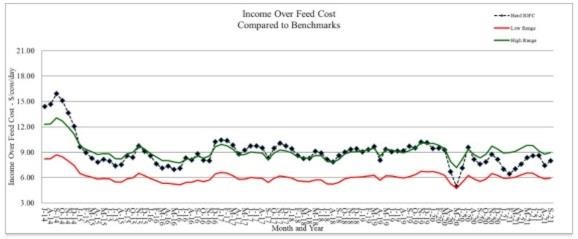By VIRGINIA A. ISHLER
Production perspective:
The volatility of the feed and milk markets has been an ongoing challenge for the dairy industry. Starting in 2015 the breakeven margins have not been ideal. The pandemic hit and created rough times for several months and with government assistance dairy operations were able to survive 2020. It is appearing that 2021 will have unprecedented high feed costs and a milk price that will not support a competitive breakeven. Precision feeding is one approach to controlling feed costs and ensuring animals are receiving the correct ration. This strategy makes sense all the time and not just in extreme years of high feed costs or low milk prices.

Using data from the Extension dairy business management team's summary report (220 herds) for 2018-2020, total feed costs as a percent of the milk income averaged 55 percent with a range of 46-66 percent. On average that leaves only 45 percent of the income to cover all other expenses. There are three repeating themes, milk production less than 75 pounds per cow, milk income per cow hovering around $4,000 and high total feed costs averaging over $2200 per cow. In today's economy, profitable herds are achieving greater than $4500 per cow milk income and less than $2200 per cow total feed costs. Precision feeding can aid in improving animal performance along with milk income and keeping feed costs in line with production.
Most of the focus with precision feeding has been on large TMR mixers supplying rations for several hundred animals in free stall housing. However, Pennsylvania has a significant portion of herds housed in tie-stall or stanchion barns utilizing TMRs or ingredients fed individually. These herds tend to milk less than 100 cows and smaller heifer groups make TMR feeding impractical. The Extension dairy team has developed a feeding system assessment protocol geared toward smaller herd sizes. In addition to the lactating herd, precision feeding can be evaluated for the dry cows and heifer groups.
Feeding systems for tie stall or stanchion barns provide their unique set of challenges when documenting precision feeding. A feeding system assessment approach is not new. The dairy team has worked with herds in the past quantifying the actual amounts being fed to average and peak producing cows. It entails using flat scales and buckets to weigh amounts of forages, including hay, to individual cows. Grain mixes and top-dresses are weighed as well. After analyzing all the feeds being fed, a ration evaluation can be completed to compare to the formulated ration. In component fed herds, compiling the feeding sequence is also helpful if production or components are not meeting the minimum benchmarks. Some common problems that surface are assuming a certain weight of concentrate using a grain scoop only to determine cows are either being under or over fed grain. Also, assumptions on the weight of a slice of hay and its actual weight typically do not match. Examining the ration for an average producing cow and peak production (average production plus 20 pounds) can also address body condition concerns that carry over to reproductive performance. Investing in a feeding assessment, especially when major ration changes are occurring can easily pay for itself if production losses are avoided.
In smaller size herds heifers and dry cows often get overlooked when evaluating precision feeding. Typically, there are very small animal numbers, and a formal ration may be lacking. Currently, a feeding system assessment is being conducted on 40 small sized dairy operations consisting of half organic and half conventional producers. The weaned calf group is the focus of the project. Evaluating the total rations including forages and the calf grower, the starch level in the total ration dry matter is ranging between two to 45 percent. Providing adequate energy is critical to these animals if they are to reach an acceptable breeding weight and height. At this age, starch should range between 25 to 35 percent and on this heifer project the average starch is less than 25 percent. It appears there are some opportunities for improvement. The long-term implications are first lactation animals not meeting their potential and the ripple effect on milk volume, components, and milk income.
The Extension dairy team is poised to conduct feeding system assessments across the Keystone state. Any animal group on the farm can be selected to evaluate precision feeding. With the current high feed costs this approach is timely coupled with new corn silage. Implementation of the formulated ration is typically where issues occur and can ultimately negatively affect milk income and the breakeven margin.
Economic perspective:
Monitoring must include an economic component to determine if a management strategy is working or not. For the lactating cows, income over feed cost is a good way to check that feed costs are in line with the level of milk production. Starting with July 2014’s milk price, income over feed cost was calculated using average intake and production for the last six years from the Penn State dairy herd. The ration contained 63% forage consisting of corn silage, haylage, and hay. The concentrate portion included corn grain, candy meal, sugar, canola meal, roasted soybeans, Optigen, and a mineral vitamin mix. All market prices were used.
Also included are the feed costs for dry cows, springing heifers, pregnant heifers, and growing heifers. The rations reflect what has been fed to these animal groups at the Penn State dairy herd. All market prices were used.
Income over feed cost using standardized rations and production data from the Penn State dairy herd.

Feed cost/non-lactating animal/day.

Source : psu.edu